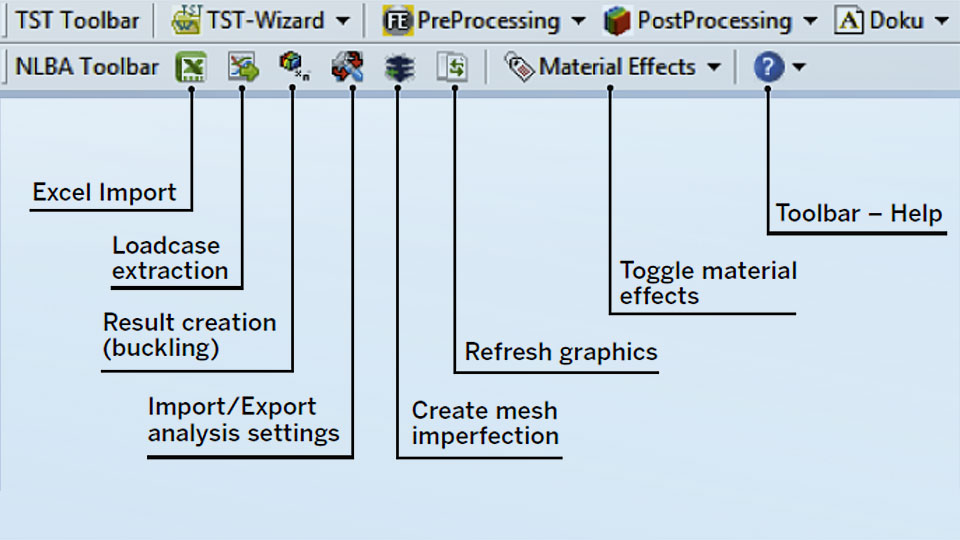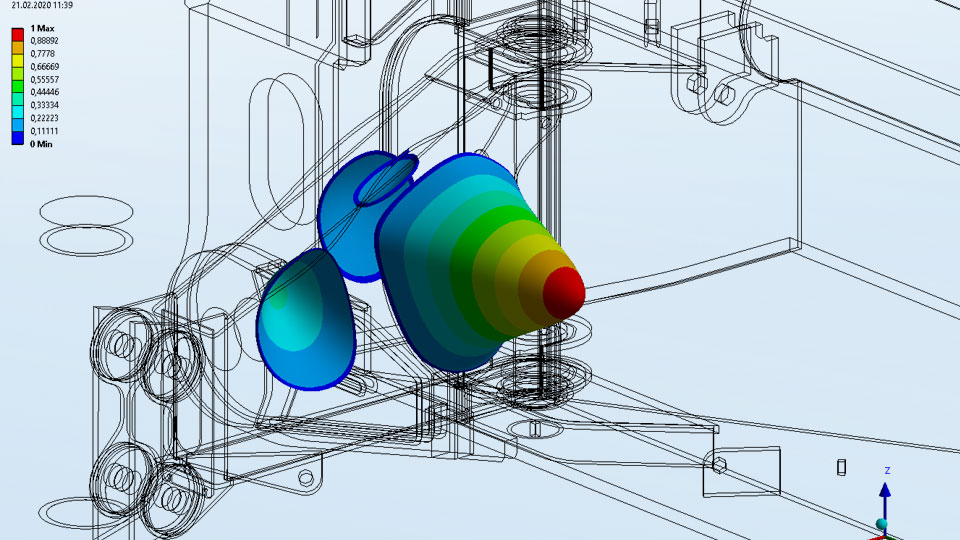Non-linear buckling and load analysis using a simulation wizard
Sector: Construction, Engineering firm/development service provider, Machinery and plant engineeringSpecialist field: Structural mechanicsAt Liebherr, an automated simulation process within Ansys Workbench significantly accelerates and simplifies the non-linear component simulation of thin-walled shell structures in mobile crane construction. The wizard guides the user through all necessary simulation steps.
Summary
Task
The Liebherr branch in Ehingen, commissioned CADFEM to develop a simulation wizard for Ansys Workbench to automate the non-linear component simulation of thin-walled shell structures in mobile crane construction. For this purpose, the decisive load cases including all associated loads and constraints should be extracted.
Solution
With ACT (Application Customization Toolkit) new toolboxes were integrated into Ansys Workbench for the use of customized software adaptation. Thus, linear buckling analyses and resulting nonlinear failure simulation can be performed by applying combined mesh imperfections from the buckling modes.
Customer benefits
This customization solution enables millions of load cases to be processed within a short time in order to clearly identify particularly relevant ones. The self-explanatory toolbar buttons secure an intuitive and coherent workflow. This guides the user purposefully through the simulation process.
Project Details
Task
The Liebherr branch in Ehingen is one of the world's leading manufacturers of mobile cranes with state-of-the-art telescopic and lattice-boom cranes on mobile and crawler tracks. These can lift loads of up to 3,000 tons and reach a lifting height of more than 240 meters. The numerical simulation serves as an efficient tool for meeting the constantly increasing demands of customers in terms of functionality, quality and safety.
In order to keep the overview of load situations to be simulated and to master the tasks time-efficiently, Liebherr has been an early adopter to automated calculation and simulation processes. Thus, millions of load cases can be simulated in a short time to ensure the identification of relevant ones.

Solution
With the new toolbar in Workbench generated with the help of ACT (Application Customization Toolkit), several improvements could be achieved. Now, linear buckling analyses and resulting nonlinear failure simulations can be performed by applying combined mesh imperfections from the buckling modes.
The self-explanatory toolbar buttons secure an intuitive and coherent workflow. Thus, the user is guided purposefully through the simulation process. In the previous wizard, APDL scripts (Ansys Parameteric Design Language) were still stored as command snippets in the structure and sometimes became unusable for re-meshing. Now they are integrated in the Workbench via modern ACT objects. It is therefore no longer possible to accidentally change the APDL code.

Customer Benefit
When updating the network, now the imperfection will be updated automatically. In addition, the data flow is displayed transparently and is always comprehensible to the user, which helps to avoid errors.
At the end of the toolbar project, CADFEM not only provided the programming results, but also the entire source code. Due to comprehensive training and transfer of the relevant know-how, Liebherr users and support staff are now capable of creating desired adaptations and minor extensions independently.

Images: © LIEBHERR
Related Training





